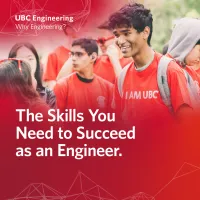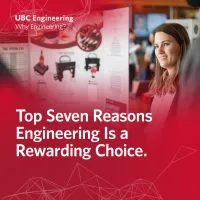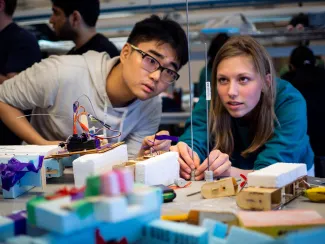"I would love to be able to apply my knowledge to make our world a little more sustainable."

Robyn Xiong
- Degree:
- Bachelor of Applied Science
- Program:
- Campus: Vancouver
Why did you want to study engineering?
There were a couple of different reasons. My brother did engineering, so I knew about it from him. But I also had a really good physics teacher in high school who was very inspiring and an advocate of lifelong learning in the sciences.
I’ve always considered myself to be an inquisitive, hands-on learner, and I knew I wanted to work in industry.
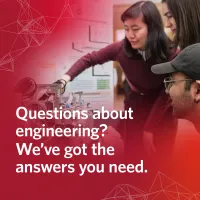
How did you choose Mechanical Engineering?
In first year, I realized I wanted something more broad than environmental engineering and that I could apply my interests in sustainability in other ways.
Mechanical engineering was my top choice because I really liked working on physical, mechanical systems.
My first year of studies also coincided with COVID, which meant that learning was happening online. I got involved in some design teams so I could connect with other people and learn a bit more than I would through classes alone. A lot of these teams are oriented to mechanical engineering and I found I really enjoyed the work.
In second year, mechanical engineering students take MECH 2. It’s a hands-on exploration of a lot of engineering principles. I quickly realized that I had chosen the right program for me. Being able to use machines to make things just felt right.
Design teams Mechanical engineering MECH 2
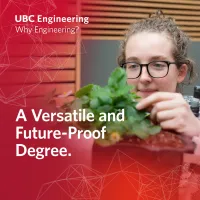
Tell us about your involvement with engineering design teams.
I was part two teams! I participated as a general member on UBC UAS, designing mechanical systems for a competition drone. I also eventually led a subteam on UBC AeroDesign, building remote-controlled, fixed-wing aircraft. It was my first time needing to manage the technical side of a project as well as a team of people.
It was great to help others build their confidence working with their hands and was an excellent growth opportunity for me. I learned a lot about project and team management.
Do you have any thoughts on the impact you’d like to have in your career?
I would love to be able to apply my knowledge to make our world a little more sustainable.
I also want to have a balanced life where I get meaning from my work as well as my hobbies! Using my skills to help an organization advance its goals is great, but I always look forward to coming home at the end of the work day to bake bread or do other things I love to do!
